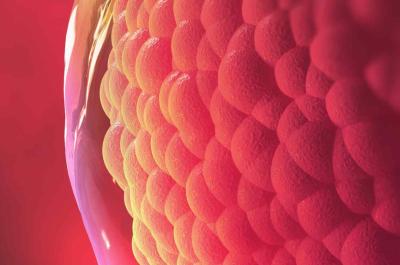
Did you know there is a phase in your menstrual cycle that comes after ovulation that’s just as important part of the cycle in preparing your body for pregnancy? Read on to learn all about the luteal phase, what it is, what happens during this phase and how long it lasts. Also, find out whether your basal body temperature (BBT) indicates when you’ve entered the luteal phase, what a short luteal phase means for your chances of conceiving and more!
In this article
- What is the luteal phase?
- What happens during the luteal phase?
- When does it start and how long does it last?
- Luteal phase symptoms
- How is basal body temperature affected during the luteal phase
- Short and long luteal phases
- Causes of Luteal Phase Defect: What is it, symptoms and treatment
- FAQ
- The bottom line
What is the luteal phase?
The menstrual cycle consists of four phases:
- Menstruation
- The follicular phase
- Ovulation
- The luteal phase.
The luteal phase of the menstrual cycle is the time between ovulation and your next period. During the luteal phase, progesterone produced by the corpus luteum (the empty follicle left in the ovary after an egg has been released) helps thicken the womb lining in preparation to receive a fertilized egg.

What happens during the luteal phase?
- Once an egg has been released from the ovary and it travels down the fallopian tube, the follicle where the egg had matured becomes a structure known as the corpus luteum.
- The corpus luteum produces progesterone for two weeks, and then dies if conception does not occur.
- Progesterone produced during the luteal phase causes the uterine (womb) lining to get thicker in readiness for a fertilized egg to implant in the lining.
- If the egg gets fertilized by sperm, it will attach itself to the lining of the womb.
- If conception doesn’t happen, the corpus luteum will shrink and die and progesterone levels drop, causing the thickened womb lining to shed, which is when the next period starts.
When does it start and how long does it last?
The luteal phase is the time between ovulation and the first day of your period. So, what does that mean in terms of how far into your menstrual cycle it happens? Well, the textbook definition places the luteal phase as lasting approximately from day 15 to day 28 of a 28-day cycle. But in reality, it’s a little more complex than that.
The start day of the luteal phase depends on the day ovulation takes place, and even in a typical 28-day cycle, there is often variation in when exactly ovulation takes place. Although the most common day of ovulation is day 15 of the menstrual cycle, a study by Soumpasis et al (2020)1 found that within cycles lasting 28 days, the actual day of ovulation ranged across 10 days. On top of that, only 12.4% of women in the study had a typical 28-day cycle.
Another study by Crawford et al (2018)2 also saw a variation in the luteal phase length, ranging from 7 to 19 days in women who had 28-day cycles, with a mean length of 14 days.
That’s not all: the length of the luteal phase can vary for the same woman from cycle to cycle meaning a woman may ovulate on a different cycle day each cycle and so enters the luteal phase on different days as well.
Luteal phase symptoms
You may enter the luteal phase of your cycle and not notice any symptoms. However, after you ovulate your body experiences a change in hormone levels, as the corpus luteum releases progesterone until it shrivels up and dies (if no conception occurs). This means that towards the end of the luteal phase, you may be affected by the decreasing level of progesterone.
The change in the level of progesterone as you approach your period may cause symptoms of PMS (pre-menstrual syndrome), such as:
- Mood swings
- Irritability
- Anxiety
- Fatigue
- Bloating
- Tender breasts
- Headaches
- Breakouts or spots
- Changes in appetite
- Changes in sex drive.
How is basal body temperature affected during the luteal phase
Progesterone produced by the corpus luteum following ovulation causes a woman’s basal body temperature (BBT) to rise slightly by around 0.3-0.6 degrees Celsius (0.5-1 degrees Fahrenheit). It will remain elevated until your period comes when it will return to your body’s own baseline temperature. If you get pregnant, then your BBT may remain elevated beyond the day you expected your period to start.
Measuring your basal body temperature throughout your cycle can help you tell if you have already ovulated and entered the luteal phase.
Short and long luteal phases
The luteal phase is important because this is when the womb lining has the chance to thicken in preparation for the implantation of a fertilized egg. A short luteal phase is defined as being 11 days or fewer from the day of ovulation to the first day of the next period. The main concern with a short luteal phase is that it may not give the womb lining enough time to thicken sufficiently to be able to support implantation of a fertilized egg.
However, a study from 20182 found that although women with a short luteal phase length showed lower fertility in the short term, over a period of 12 months, their chance of conceiving was comparable to women with normal luteal phase lengths (lasting 12 to 14 days).
Long luteal phases (longer than 14 days) may be due to a hormone imbalance, such as seen in polycystic ovarian syndrome (PCOS). However, if you’ve ovulated more than 14 days ago and there is still no period, you could be pregnant.
Causes of Luteal Phase Defect: What is it, symptoms and treatment
Luteal Phase Defect (LPD) (sometimes referred to as Luteal Phase Deficiency or Luteal Phase Insufficiency) refers to a condition where there is abnormality in the development of the endometrium (the innermost lining of the uterus). To put it simply, if a woman has LPD her womb lining doesn’t thicken properly each month, making it hard for her to carry a pregnancy.
What causes Luteal Phase Defect?
The precise cause is still under debate. However, one possible cause is that the amount of progesterone secreted by the corpus luteum is too low. Another possible cause is that the endometrium doesn’t respond normally to progesterone.
What are the symptoms of Luteal Phase Defect?
The possible symptoms of LPD are:
- A luteal phase that’s 11 days or fewer in length
- Any vaginal spotting before menstruation
- A slow or low rise in BBT following ovulation
- Trouble conceiving
- Repeated miscarriage
To make a diagnosis, your doctor may recommend further testing if LPD is suspected, although keep in mind LPD itself cannot be diagnosed with a single test.
How is Luteal Phase Defect treated?
If you have LPD, treatment really depends on your specific situation and only your doctor can advise on the right course of action. However, the following treatments have been used to treat LPD:
- Stimulating follicular growth with treatments like clomiphene citrate or human menopausal gonadotropins (hMG)
- Prescribing supplemental hCG to improve the secretion of progesterone from the corpus luteum
- Prescribing additional progesterone (via injection, orally or vaginal suppositories) following ovulation.
FAQ
How can you feel during the luteal phase?
You may be in the luteal phase and not notice anything different, although it’s not uncommon to feel symptoms of PMS during the latter stages of the luteal phase as progesterone levels decrease. Symptoms may include:
- irritability
- anxiety
- tender breasts
- fatigue
- bloating.
Can you get pregnant in the luteal phase?
Yes, however, once you’ve ovulated the egg can only survive for 12-24 hours, you can only get pregnant in the first day of the luteal phase.
How long does a normal luteal phase last?
The average length of the luteal phase is cited as 14 days, but it can be more or fewer depending on your cycle length and when you ovulate during the cycle.
How to calculate my luteal phase?
If you use an ovulation test, you’ll know when you see an LH surge that you’ll ovulate within the next 24 to 36 hours. This means you will enter the luteal phase in around 24 to 36 hours. Alternatively, if you are tracking your BBT, when your BBT increases it’s an indication that you’ve already ovulated and are entering the luteal phase.
The luteal phase lasts from ovulation to the day before your period starts.
Does the luteal phase start on the day of ovulation?
The luteal phase starts the day after ovulation and ends with the day before your period starts.
How can I increase my luteal phase naturally?
If you have a short luteal phase and are worried that this could affect your chance of getting pregnant, talk to your doctor about your treatment options and whether there are any natural remedies that might work to lengthen your luteal phase.
The bottom line
The luteal phase plays an important role in early pregnancy, as it’s the time when the womb prepares for the implantation of a fertilized egg.
The luteal phase lasts from the day after ovulation until the day before your period starts. Experts say the average length of the luteal phase is 14 days, but there is a broad range of what’s considered normal. Keep in mind, the length of the luteal phase can be different from woman to woman, and also from cycle to cycle. It can vary based on the length of your menstrual cycle and at which point you ovulate during the cycle.
- Soumpasis, B. Grace, and S. Johnson Real-life insights on menstrual cycles and ovulation using big data Human Reproduction Open, pp. 1–9, 2020
- Crawford NM, Pritchard DA, Herring AH, Steiner AZ. Prospective evaluation of luteal phase length and natural fertility. Fertil Steril. 2017;107(3):749-755. doi:10.1016/j.fertnstert.2016.11.022

Advanced Digital Ovulation Test

Ovulation calculator
Knowing your most fertile days can increase your chance of getting pregnant and knowing the likelihood you may ovulate on a specific day may help you better understand your fertile window.




